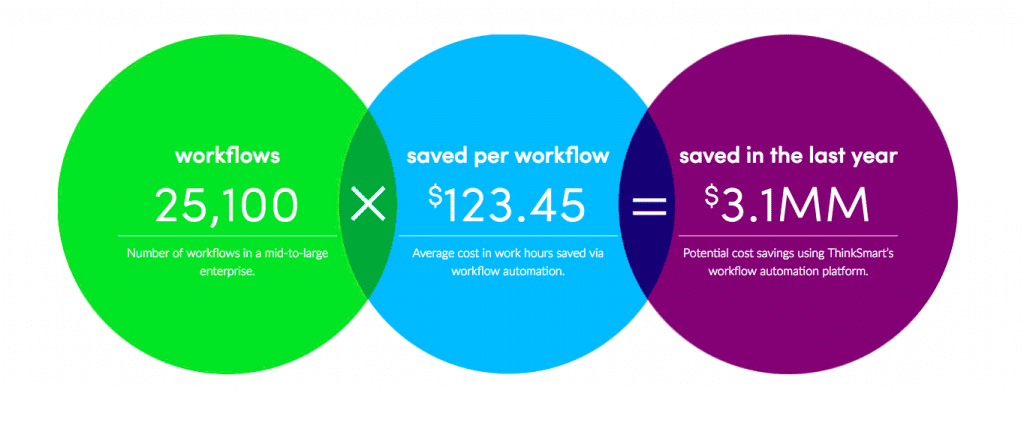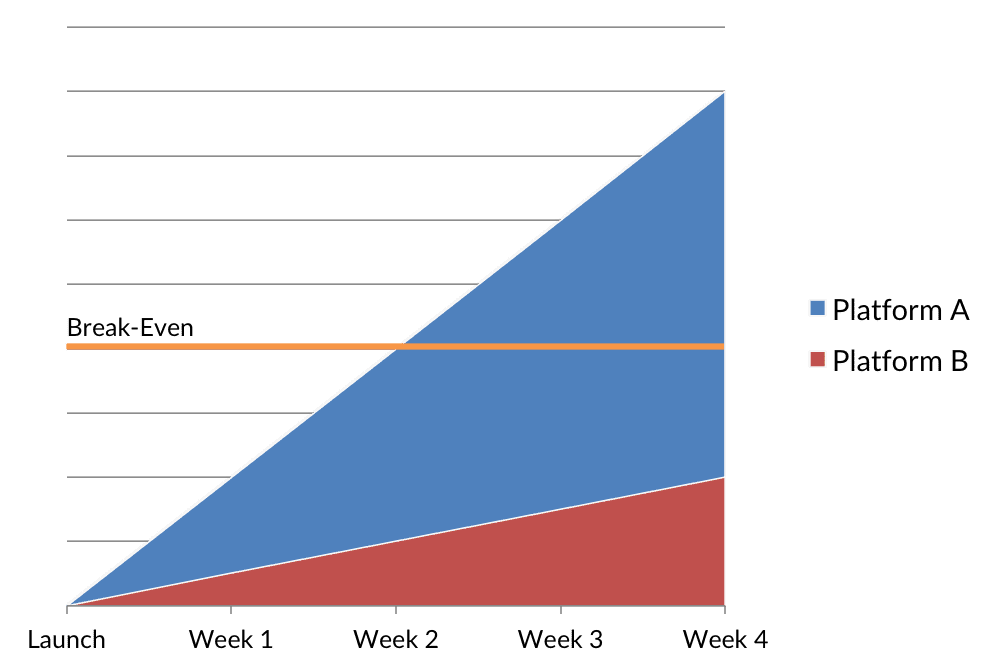Look Beyond Workflow Automation ROI – What’s the T2V?
No matter what type of digital transformation an enterprise aspires to, it ought to have its vision focused squarely on the benefits technology delivers. But how quickly it sees ROI and other benefits? That’s just as important in making a platform adoption decision.
At this year’s LegalTech, there was a lot of talk about ROI. But there was a shocking lack of messaging about how quickly a platform adopter will see any ROI from the technology they choose to implement.
Mention “ROI” and most of us will begin thinking of the “return” in bottom-line terms. How much will it save? How much revenue will it directly or indirectly generate? You can see that reflected in our own ROI calculation about applying workflow automation to a legal non-disclosure agreement (NDA) process:

In evaluating any process technology platform,, though, we’d argue that a would-be adopter ought to think outside the ROI box. They ought to set their eye on another metric that’s just as important: Time-To-Value, we call it, or T2V.
What’s the true speed of payback?

Time-To-Value is a measurement of the time it takes to realize returns on your workflow automation platform investment. The benefits of faster payback should be obvious: the sooner you’re past the break-even point, the sooner the enterprise begins profiting from adoption.
The two hypothetical workflow automation products shown in the graph below each deliver different T2Vs. Platform A reaches the “payback point” much faster than Platform B, so dividends begin accruing to the organization a lot sooner.

There are, of course, multiple factors that can impact T2V:
- The cost of the platform, whether it’s subscription-based or outright purchase.
- The speed and breadth of its implementation across the organization.
- Infrastructure costs, if any, dictated by platform configuration (network hardware or on-premise servers, for instance).
- Support costs, such as for a platform needing more hands-on integration and maintenance by internal IT staff Training requirements and the employee onboarding curve.
- How and where the platform is applied; is it being deployed for processes where improvements drive high returns?
Another consideration? What, we should always ask, defines actual “value” for the organization?
What’s the “return” we’re talking about?
The aggregate value of a workflow automation solution goes beyond dollars. So when calculating the total scope of “value dimensions” a platform delivers to the enterprise, consider some of the other effects we’ve observed. These include the “unintended benefits” that can profoundly re-shape a workplace:
- Responsiveness & agility gains: Improving operational agility makes the enterprise better able to handle existing work, and seize new or unexpected opportunities as they spring up. For both private and public service organizations, there are a variety of business process management (BPM) key performance indicators (KPIs) managers can employ to assess pre- and post-WFA scenarios. Those include error rates, number of instances of each process or document, seasonality metrics, commercial opportunities per user per period, process step time-to-complete, overall process time-to-complete, SLA compliance scores and others.
- Morale improvements: Enterprises that have adopted workflow automation have seen employees, especially Millennials, develop a more positive view of the workplace; the latter, especially, are sensitive to whether or not they’re working at an organization that’s leveraging state-of-the-art tools and technologies.
- Heightened collaboration: Collaboration is a grail for most organizations since it helps extract the maximum value from your human assets by delivering smarter, better work product. It’s one the main ways a workflow automation platform with built-in collaboration features can be an important tool for transforming operational culture, whether within a single department or across the entire organization.
- Stronger customer & stakeholder ties: Once repetitive tasks get automated, burdens are removed from both the enterprise team and its customers or stakeholders. Both sides can focus on more important tasks than shuffling paperwork or wondering when (or if) a project will see completion.
- Halo effects: Improving core workflows spins off timesaving benefits for other processes and people even incidentally touched by those workflows; a warehouse manager, for example, can appreciate how a more efficient,less error-prone sales or procurement process makes his/her job more predictable and less stressful.
- Higher-quality work: A study of healthcare providers who’d adopted workflow automation found that not only were there benefits like time savings, reductions in staff stress and improvements in morale, but the actual quality of care being given to patients was improved, as staffers were freed to spend more time doing what mattered most.
Always ask “what’s the T2V”?
It’s a “where’s the beef?” question you should put to any workflow automation vendor: What value dimensions can you expect from your expenditure, and how soon can you expect them to materialize?
If a WFA provider is stumped by that question, or can’t provide authentic case studies, maybe it’s because they designed their offering without paying enough attention to how it has to perform in the real world, satisfying adopters’ real needs.



